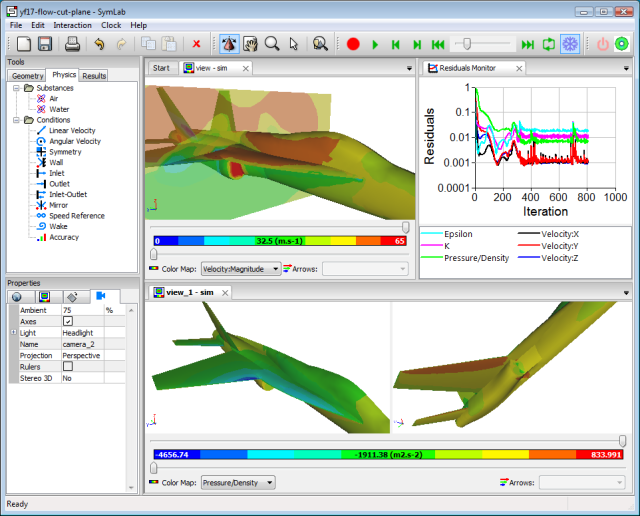Abstract accepted for: Fourth OpenFOAM Workshop, June 1-4 2009, Montreal, Canada
Caedium: An Interactive Simulation Environment for OpenFOAM
Richard Smith, Symscape
Caedium is a CAE system designed to support CFD and other forms of analysis. The latest addition to the Caedium modular architecture is the RANS Flow add-on, which provides an interactive environment for a selection of RANS OpenFOAM solvers.
 Figure 1, Caedium RANS Flow Add-On Flow Simulation.
Figure 1, Caedium RANS Flow Add-On Flow Simulation.

